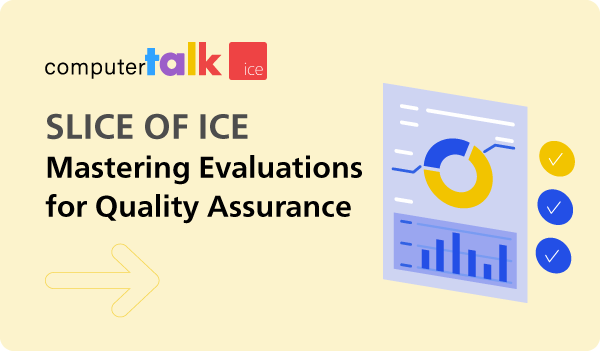Connect, Extend, Unify: All About The 3 Models of Microsoft Teams Contact Center Integration
by Shaundalee Carvalho | Published On June 27, 2022 | Last Updated November 28, 2025

Microsoft Teams is one of today’s most popular tools for corporate communications.
Teams is often used for internal collaboration, and, in some cases, for all of an organization’s external communications as well.
Teams’ cloud voice capabilities, including auto attendant and call queues, are sufficient for organizations that don’t require more complex solutions with business tools and workflows. However, for those that do, that’s where Microsoft Teams certified contact centers come in.
What is a Microsoft Teams Certified Contact Center?
A Microsoft Teams certified contact center is a contact center solution that integrates with Teams and has been evaluated and certified by Microsoft to ensure that it meets their standards.
To begin, contact center providers can integrate their solutions with Microsoft Teams. When organizations use a contact center with a Teams integration, it allows them to meet more complex needs that Teams alone cannot meet, while still leveraging the Teams platform.
If contact center vendors want to guarantee to their customers that their solution “provides the quality, compatibility, and reliability they expect from Microsoft solutions”, then they can participate in the Connected Contact Center for Microsoft Teams Certification Program.
Under this certification program, there are three different models of integration that providers can choose from.
What Are the 3 Integration Models for Teams Certified Contact Centers?
The three integration models for Teams certified contact centers are called Connect, Extend, and Unify. Each model offers a different depth of integration and performance capability, shaping how organizations deliver customer and agent experiences.
Connect Model
Under this model, contact center solutions are connected to Microsoft Teams phone system infrastructure using certified Session Border Controllers (SBCs) and Direct Routing. Integration is by Teams Graph APIs and Cloud Communication APIs. This allows for enhancements to routing, configuration, and system insights.
Under this model, Teams can be used to see when agents are available and for transfers and group calls.
Extend Model
Under the Extend model, contact centers are integrated with Microsoft Teams using the Teams client platform, Teams Graph APIs, and the Cloud Communications API in Microsoft Graph. The Teams phone system is used for calls and call controls in the contact center, while the vendor acts as a telephony carrier with Microsoft. With this model, the contact center vendor can design all workflows and advanced routing, while agents use Teams for both internal collaboration and external communications.
One key difference between the Connect model and the Extend model is that the agent’s experience is much more Teams-based in the Extend model: Teams is the primary calling endpoint.
Unify Model
Unify, the third and final model of integration is the most heavily integrated with Microsoft. It leverages Teams Phone Extensibility to create a seamless integration between the contact center and Microsoft Teams telephony. It reduces setup steps and extends contact center management into the Teams admin experience, allowing IT teams to more easily deploy and scale their contact center within the Microsoft ecosystem.
Which Model Does ComputerTalk’s ice Contact Center Use?
ice Contact Center is integrated with Microsoft Teams under the Connect, Extend, and Unify models. In fact, ComputerTalk is currently the only contact center provider that offers all three integration models. This achievement is just one small part of ComputerTalk’s long history with Microsoft; ice was also one of the very first solutions to achieve the Microsoft Teams contact center certification when the program was first introduced.
Let Us Help
For contact center vendors, the decision of which model to use to integrate their solution depends on their technology, and in what ways they want to use Microsoft’s technology.
For organizations looking for a Teams-certified contact center solution, the integration model they choose largely depends on their desired agent experience.
If your organization is looking for a Microsoft Teams-certified contact center, speaking with certified contact center providers, viewing demos of their agent experiences, and examining your existing technology with their guidance can help you to figure out which integration model is right for your organization.
To learn more about the benefits of a Microsoft Teams-certified contact center, check out 5 Ways a Microsoft Teams Certified Contact Center Can Help Your Organization.
More from our blog
 ComputerTalk provides diverse growth opportunities and a supportive team makes the learning process seamless.
ComputerTalk provides diverse growth opportunities and a supportive team makes the learning process seamless.
 On Wednesday, October 30th, ComputerTalk hosted our latest Slice of ice webinar on mastering the evaluations tool. During this webinar, our Training & Documentation specialist, Diane Vasquez, outlined how to leverage your evaluation tool.
On Wednesday, October 30th, ComputerTalk hosted our latest Slice of ice webinar on mastering the evaluations tool. During this webinar, our Training & Documentation specialist, Diane Vasquez, outlined how to leverage your evaluation tool.
 Enabling multi-contact handling in your contact center can be a great way to quickly boost your contact center’s service capacity without investing any extra funds, installing extra software, or hiring more agents.
Enabling multi-contact handling in your contact center can be a great way to quickly boost your contact center’s service capacity without investing any extra funds, installing extra software, or hiring more agents.

